
OkinoshimaOkitsu-miya Yohaisho, Munakata Taisha
An Accessible Spot Near Okinoshima
Because Okinoshima has long been an object of worship, public access to the island is strictly limited.
The Okinoshima landscape has been preserved intact until now because local people have strictly observed various taboos.
Since Okinoshima is closed to the public, Okitsu-miya Yohaisho (Worship Hall) was built on a coastal terrace on the north side of Oshima, which affords visitors an opportunity to worship the sacred island from afar.
The building of Yohaisho serves as a worship hall from which visitors can pay homage to the island.
The traditions of worshipping the island and observing the taboos have been passed down to the present day.
A shrine has been established here since the early eighteenth century, as a description of the stone monument.
On a clear day, visitors to Okitsu-miya Yohaisho can clearly see Okinoshima floating on the horizon.
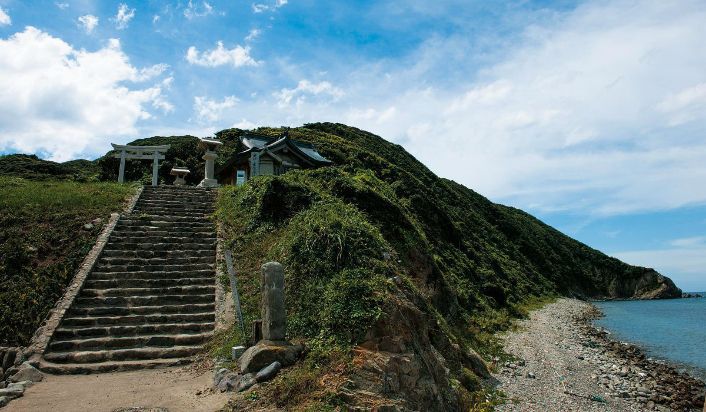
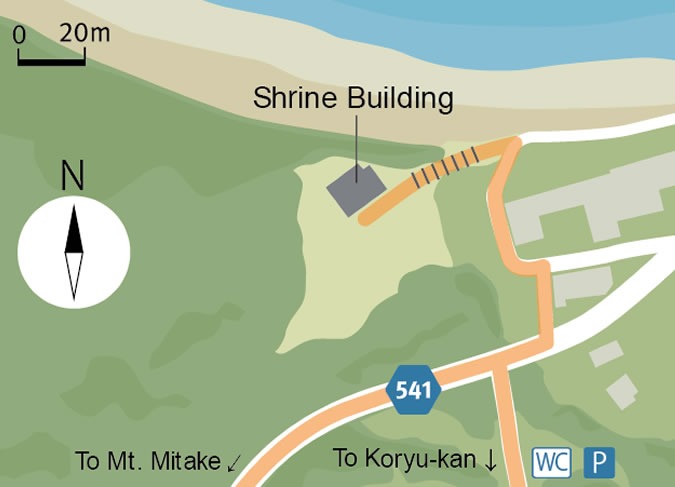
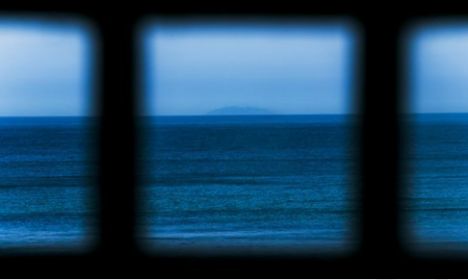
building commands a view of Okinoshima.
Remote worship
During the Edo period, structures existed on Eguchi Beach on the main island of Kyushu to worship both Okitsu-miya and Nakatsu-miya from afar. The feudal lord of Fukuoka visited Hetsu-miya when he conducted an inspection of the territory, and at that time he paid homage to both shrines.
Records show that places to worship Okitsu-miya from afar had been established in the low-lying areas near Fukuoka Castle, on Mt Aratsu (Nishi-koen, Fukuoka City), and in Uomachi (in the vicinity of Akasaka, Fukuoka City).
The people of the Munakata region have long worshipped Okinoshima from afar in daily life to pray for safe ocean voyages, a plentiful fishing catch, abundant crops, and household peace and prosperity.
At one time there was a custom called "Okinoshima retreat (Okinoshima Gomori)". In the summer, when the rice planting was done, people would seclude themselves at a beach or mountain plateau from which they had a view of Okinoshima, make offerings of sacred sake and red bean rice, and give thanks that the rice planting had been safely concluded. They would also pray for good health as they worshipped Okinoshima from afar.
The people of the Munakata region feel the presence of deity in the natural landscape, and have taken great care to preserve their faith in Okinoshima and the Three Female Deities of Munakata.
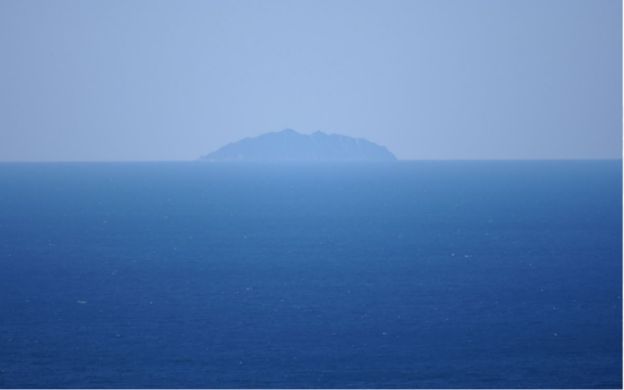
App to Find the Sacred Island of Okinoshima
Historic Sites
Oshima Koryu-kan(Oshima Cultural Center)
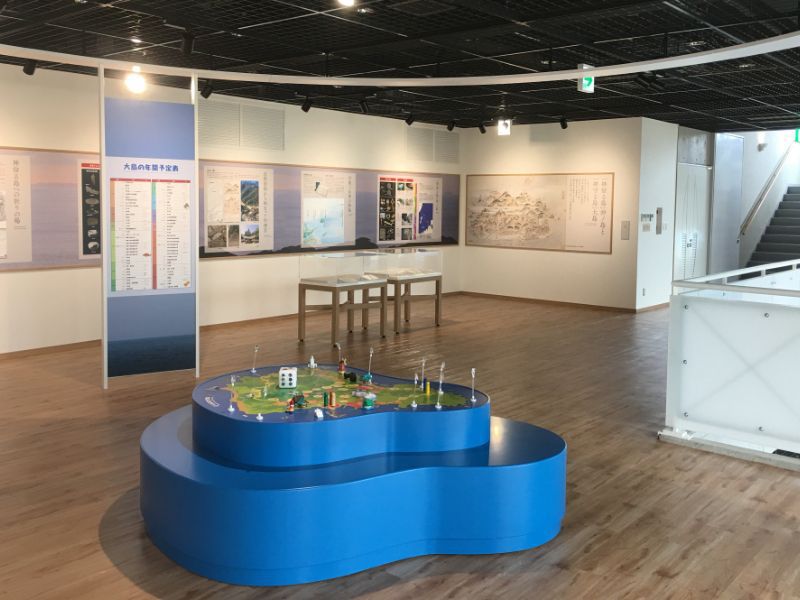
This facility offers displays and explanations about the deep historical connection between Okinoshima and Oshima, particularly regarding Nakatsu-miya and Okitsu-miya Yohaisho as places of worship.
901-4 Oshima, Munakata City, Fukuoka
Phone: 0940-72-2797
Hours: 10:00–16:00 daily
Closed: Mondays (when Monday is a holiday, closed the following working day) , New Year's holiday, and when boats to the island are cancelled
Admission: Free
Twenty-minute walk from Yohaisho
Batei-iwa(lit."rock with horse hoofprints")
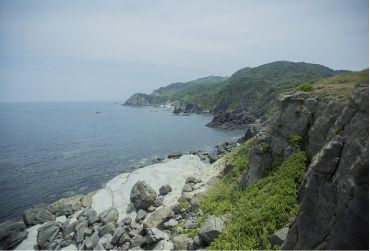
According to legend, the hoofprints were imprinted on the rock when a horse carrying Tagorihime-no-Kami, one of the three Munakata goddesses, on its back jumped from the rock to Okinoshima.
Forty-minute walk from Yohaisho
Windmill Observation Tower / Cannon Fort Site
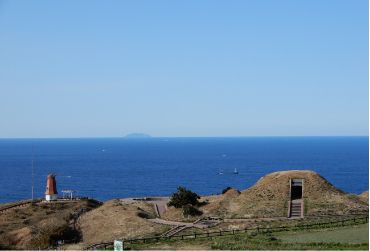
From the site of a cannon fort used during World War II, visitors can view Okinoshima on a clear day. The path linking the fort site with Okitsu-miya Yohaisho was constructed by the Japanese Imperial Army.
Three minutes on foot from the Ruins of Cannon Fort to the Observation Deck (240m)
Miura Cave
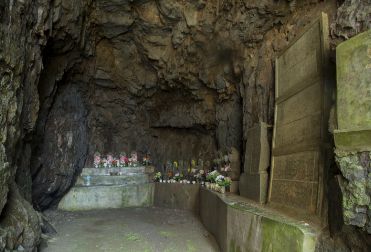
This cave was the hiding place of Father Johan, who escaped
Fifty-minute walk from Yohaisho
Links and Contact Information
| Munakata Taisha Shrine Office |
|
|---|---|
| Munakata City Office for World Heritage |
|


